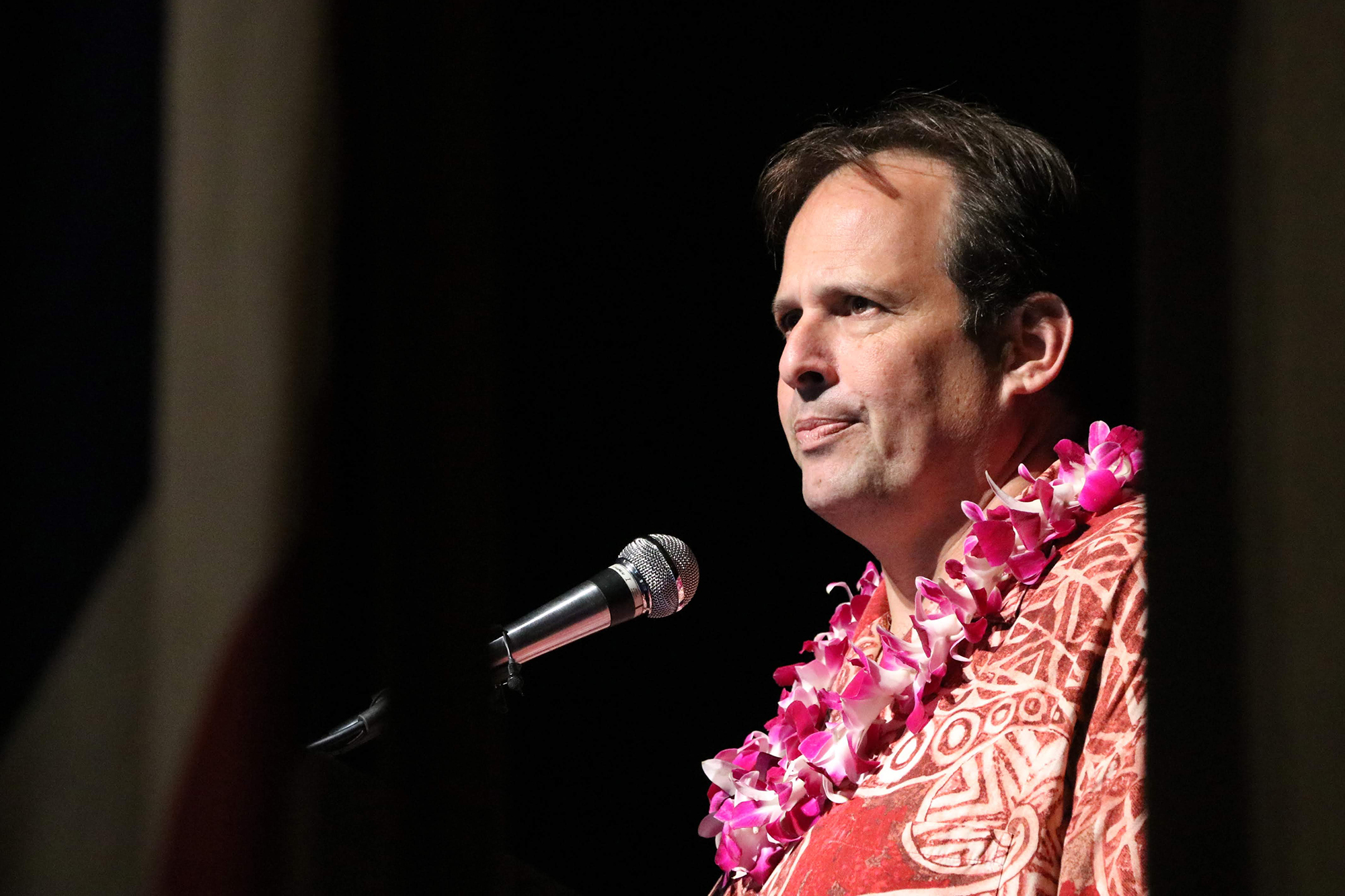Hawaii State Teachers Association President Corey Rosenlee submitted the following letter as public written testimony to the Hawaii State Board of Education.
To Chair Payne and members of the Board of Education:
The Hawaii State Teachers Association requests that the Board of Education stand with our keiki and write a letter urging Gov. David Ige to prevent destructive furloughs and protect public education funding for our keiki.
The imposed furloughs that Gov. Ige plans to begin in January will have a prolonged, devastating impact on our teacher workforce and on our keiki.
The governor claims he has no choice but to implement furloughs. This is not true. He has options other than furloughs.
At the end of this fiscal year, on June 30, 2021, the state will have an estimated $546 million surplus. When you add in other reserve funds, the surplus total climbs to $614 million. By comparison, the governor’s furloughs would save a little more than $140 million over the next six months, an amount that would easily be absorbed by the state’s current surplus.
The state will not go bankrupt if furloughs are not implemented immediately. The Legislature has authorized the governor to borrow $2.1 billion to weather this crisis, and he still has $1.3 billion available. A bipartisan congressional stimulus proposal currently being debated contains $82 billion for schools. Hawaii legislative leaders have publicly stated that it is too early for furloughs and they are trying to find other solutions. The governor should give the Hawaii State Legislature and Congress time to approve another stimulus bill or find other ways to increase revenue.
We have seen years of the ill effects of an unfortunate trend in Hawaii: when there is an economic downturn, governors have cut teacher pay and education funding. Gov. Ige would be the third governor in a row to cut teacher pay: Ige (furloughs), Neil Abercrombie (imposed contract), Linda Lingle (furloughs). This trend must stop. Education and our keiki have become an easy target that does not reflect our values. Do we value our children’s learning? During this pandemic, firefighters and police officers did not see their pay cut while Congress increased military wages by three percent. Other countries consider it shameful to cut school funding, yet we have another Hawaii governor planning to do it again.
After studying government cuts to education during the last recession and their impact on schools, University of South Carolina law professor Derek Black stated in the Washington Post, “Last time, legislators convinced themselves that schools could absorb these losses without harming kids… Studies later confirmed their naivete. Recession-era cuts depressed student achievement.”
The American Educational Research Association found “the Great Recession and subsequent shock to school spending was associated with significant declines in student academic achievement… (with) school districts serving higher concentrations of low-income and minority students experienced greater declines in achievement from school-age exposure to the recession. Thus, district achievement gaps may have widened as a result of the Great Recession.”
The 2009 recession and subsequent furloughs directly led to Hawaii’s teacher shortage crisis — we fall short 1,000 qualified teachers every year. Our veteran teachers are still struggling with the impacts of the previous recession. Mid-level public school teachers in Hawaii earn $18,000 to $30,000 less than their counterparts in similar districts across the country, and according to HIDOE annual reports, many end up leaving the state altogether. Furthermore, the number of Hawaii college graduates with education degrees has dropped by 37 percent over the past decade. Teaching is no longer considered an attractive, stable profession.
In a Dec. 13 editorial titled, “Hawaii’s Budget Burden Must be Shared,” the Honolulu Star-Advertiser claimed our public employee unions need to share the burden of the state’s budget crisis. But what about those with higher incomes? Since the COVID-19 pandemic began, the stock market has improved immensely. The billionaire class in the U.S. has seen their wealth increase by $845 billion and in Hawaii, luxury homes are outselling 2019 prices. High-paying jobs have increased by two percent while low-income jobs have decreased by 20 percent. Why must Hawaii’s financial burden only be shared by our working- and middle-class earners? How does decreasing pay for teachers and other government workers improve the lives of our hotel workers and our business owners? What is “fair” about the wealthy paying less as a percentage of their income than the poorest 20 percent of Hawaii’s population? State Senate President Ron Kouchi suggested the possibility of higher taxes on people who earn $200,000 and more and rescinding unidentified tax exemptions.
Furloughs will hurt our teachers and our keiki, as well as Hawaii’s economy. Hawaii economists have found state worker salaries reflect a spending multiplier of 1.5, which means every $1 reduction in state government salaries leads to a $1.50 reduction in overall economic activity. A University of Hawaii Economic Research Organization study last spring indicated “that multipliers can be even larger in periods of extreme slack, such as the downturn we are now entering. The results from our models may very well understate the benefit of borrowing now to keep state and county spending in place.”
Education should be the last place to target when considering budget cuts. When Gov. Ige ran for the state’s highest elected position, he said, “Improving public education is one of my top priorities. Hawaii’s children deserve quality public education that provides an opportunity for all students to achieve their highest potential.” Let’s give our keiki that opportunity by looking for ways to preserve education funding instead of cutting budgets that will harm students and the community for years to come.
Corey Rosenlee
President
Hawaii State Teachers Association

